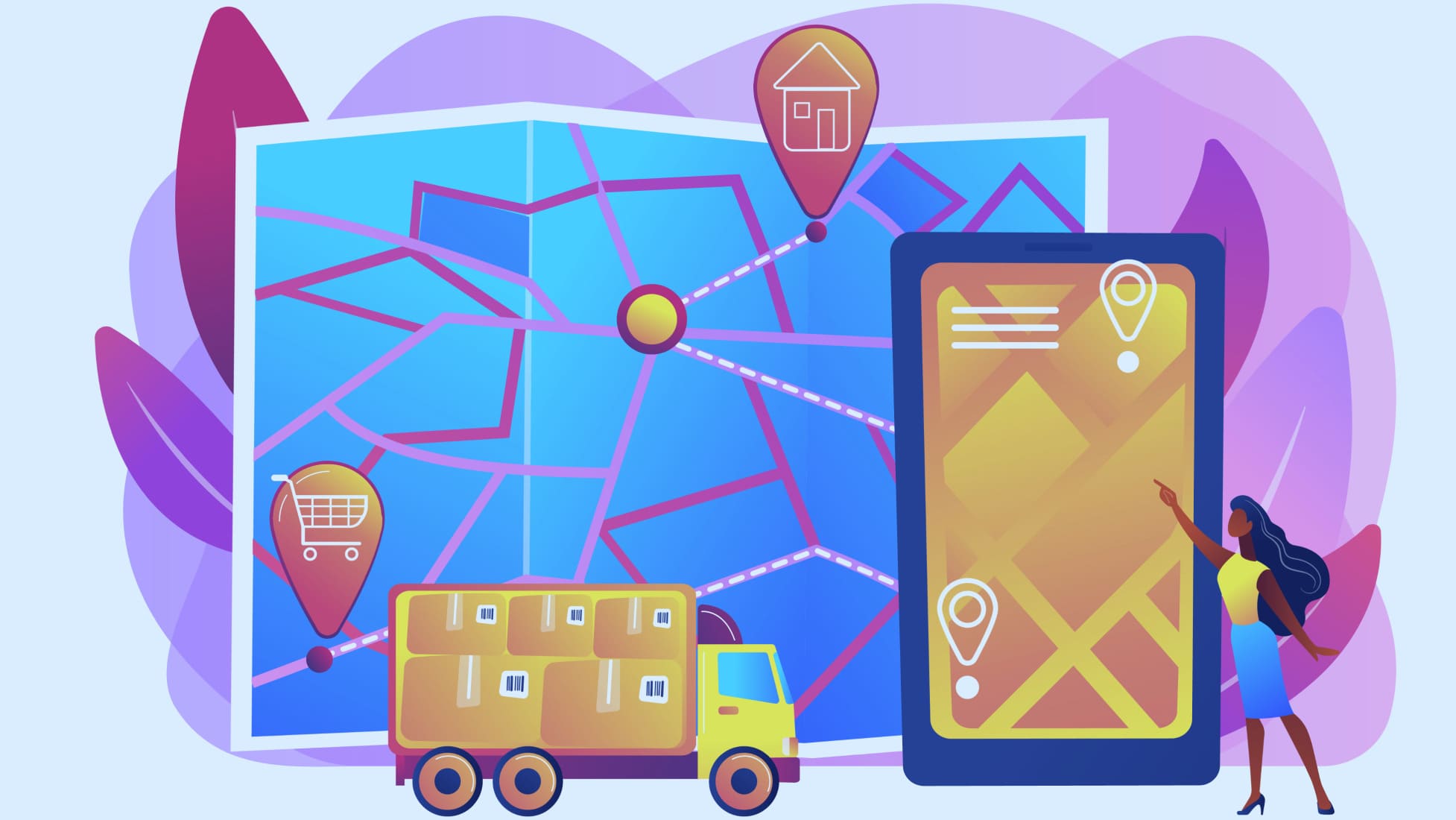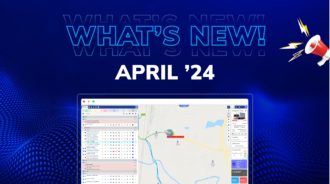In today’s fast-paced world, businesses constantly seek ways to optimize their operations, especially in the realm of deliveries. The advancement of technology has paved the way for innovative solutions like routing software for deliveries. This powerful tool, integral to advanced fleet management systems, is revolutionizing how businesses handle their delivery processes.
What is Routing Software?
Routing software for deliveries is a technological solution designed to plan, execute, and optimize routes for delivery vehicles. It streamlines the delivery process by providing the most efficient pathways for transportation, thereby reducing travel time and costs.
Importance in Today’s Market
In a market where time is money, routing software is invaluable. It enhances customer satisfaction through timely deliveries and plays a crucial role in logistics and supply chain management.
The Evolution of Routing Software
Early Days to Now
Initially, routing was a manual task, dependent on local knowledge and physical maps. However, technological advancements have transformed it into an automated, data-driven process.
Core Functionality
Routing software for deliveries is designed to manage and optimize the paths taken by delivery vehicles. At its core, the software does the following:
- Route Planning: Calculates the most efficient routes for multiple deliveries, taking into account factors like distance, traffic conditions, and delivery time windows.
- Route Optimization: Continually assesses and optimizes routes in real-time, accounting for unexpected events like traffic jams, road closures, or delivery delays.
- Automated Dispatch: Allocates delivery tasks to drivers based on location, availability, and capacity, ensuring the most efficient use of resources.
- Performance Tracking: Monitors and records data on delivery times, route efficiency, and driver performance, providing valuable insights for future improvements.
Integration with Fleet Management
Routing software is not just a standalone tool; it’s a key part of comprehensive fleet management systems. Here’s how it integrates and adds value:
- Vehicle Tracking: Works in tandem with GPS tracking systems to provide real-time location data of delivery vehicles, enhancing route accuracy and reliability.
- Maintenance Scheduling: Helps in planning vehicle maintenance around delivery schedules, ensuring minimal disruption to operations.
- Fuel Management: By optimizing routes, the software contributes to reduced fuel consumption, which is a significant aspect of cost-saving in fleet management.
- Compliance and Safety: Ensures that routes comply with regulatory requirements and prioritizes safety by avoiding hazardous conditions.
Advanced Features and Technologies
Modern routing software incorporates cutting-edge technologies for enhanced performance:
- AI and Machine Learning: These technologies enable the software to learn from past data and improve routing decisions over time.
- Cloud-Based Platforms: Many routing software solutions are cloud-based, offering scalability, remote access, and real-time data synchronization.
- Customizable Algorithms: Businesses can tailor the routing algorithms to prioritize specific factors like fastest delivery, lowest cost, or minimum environmental impact.
- Integration with Customer Service Platforms: Some routing software can integrate with customer service systems to provide real-time delivery updates to customers, enhancing the overall experience.
Importance in Customer Satisfaction and Business Growth
- Enhanced Delivery Predictability: Accurate and efficient routing leads to on-time deliveries, which is crucial for customer satisfaction and loyalty.
- Scalability: As businesses grow, routing software scales accordingly, handling an increasing number of deliveries without sacrificing efficiency.
- Data-Driven Decision Making: The analytics provided by routing software empower businesses to make informed decisions, leading to continuous improvement and growth.
- Competitive Edge: In the logistics and delivery industry, the ability to deliver quickly and reliably can set a business apart from its competitors.
Integration with Fleet Management
Modern routing software is often part of a broader fleet management system. It doesn’t just suggest routes but also considers vehicle availability, driver schedules, and real-time traffic updates.
How Routing Software Works
Data-Driven Route Optimization
- Data Collection: The software gathers comprehensive data, including delivery addresses, preferred delivery time windows, vehicle capacity, driver availability, and historical traffic patterns.
- Analyzing Constraints: It takes into account various constraints such as road restrictions, vehicle type-specific routes, driver working hours, and customer-specific requirements.
- Optimization Algorithms: Utilizing advanced algorithms, the software calculates the most efficient routes. These algorithms are often based on complex mathematical models like the Travelling Salesman Problem (TSP) or the Vehicle Routing Problem (VRP).
Real-Time Dynamic Routing
- Live Traffic Data: The software integrates real-time traffic data to adjust routes on the fly, avoiding traffic jams, road construction, or accidents.
- Predictive Analysis: Some advanced systems use predictive analysis to anticipate potential delays based on historical traffic data and weather conditions.
- Immediate Re-routing: In case of unexpected delays or changes in delivery schedules, the software can instantly recalculate routes to maintain efficiency.
Integration with IoT and Telematics
- Vehicle Telematics: Routing software often works in conjunction with vehicle telematics, providing real-time data on vehicle location, speed, and diagnostics.
- IoT Devices: Integration with IoT devices can offer additional insights, such as cargo conditions, vehicle fuel levels, and more, further optimizing the delivery process.
Enhanced Communication and Feedback Loops
- Driver Communication: The software facilitates seamless communication between dispatchers and drivers, providing them with up-to-date routing information and delivery instructions.
- Customer Notifications: Many systems also include features for updating customers on delivery statuses, thereby improving the overall customer experience.
- Feedback and Improvement: Post-delivery feedback is collected and analyzed for continuous improvement of routing decisions and customer service.
Reporting and Analytics
- Performance Metrics: The software generates detailed reports on various performance metrics like on-time delivery rates, route efficiency, fuel consumption, and driver performance.
- Data Visualization: Advanced systems offer data visualization tools, making it easier to identify trends and areas for improvement.
- Customizable Reports: Businesses can customize reports to focus on specific metrics that are most relevant to their operations.
Future Developments
- AI and Machine Learning Enhancements: Future developments in AI and machine learning will likely make routing software even more predictive and adaptive, taking into account a broader range of variables.
- Increased Automation: There is a trend towards more automated systems, potentially integrating with autonomous vehicles for fully automated delivery processes.
- Eco-Friendly Routing: As sustainability becomes a bigger concern, routing software will likely include more features to minimize environmental impact, like optimizing for fuel efficiency or suggesting electric vehicle routes.
Key Features of Top Routing Software
- Dynamic Route Optimization: Adjusts routes in real-time based on traffic and other factors.
- Automated Scheduling: Aligns driver availability with delivery schedules.
- Real-Time Tracking: Enables businesses and customers to track deliveries in real-time.
- Reporting and Analytics: Provides insights into delivery efficiency and areas for improvement.
Benefits of Using Routing Software
Enhanced Efficiency and Time Management
- Optimized Routes: The software calculates the most efficient routes, significantly reducing travel time. By avoiding traffic congestion and choosing shorter or faster paths, deliveries can be completed more quickly.
- Reduced Idle Time: Efficient routing minimizes idle time for drivers. Less time spent waiting at traffic lights or in congestion means more deliveries can be completed in a day.
- Better Time Management: With accurate predictions of delivery times, businesses can plan their schedules more effectively, leading to better time management and increased productivity.
Cost Reduction and Economic Benefits
- Fuel Savings: One of the most immediate benefits is reduced fuel consumption. Efficient routes mean less driving, which directly translates to lower fuel costs.
- Vehicle Maintenance: Less time on the road also means less wear and tear on vehicles, which can reduce maintenance costs.
- Labor Costs: Optimized routes and schedules can lead to a more efficient use of driver time, potentially reducing the need for overtime and associated labor costs.
Improved Customer Satisfaction and Service Quality
- Timely Deliveries: Routing software ensures that deliveries are made within promised time windows, increasing customer satisfaction.
- Real-Time Updates: Many routing solutions offer real-time tracking for customers, providing them with up-to-the-minute information about their delivery status.
- Customization of Delivery Options: With more efficient routing, businesses can offer customers more options for delivery times, including same-day delivery in some cases.
Increased Scalability and Flexibility
- Adapting to Business Growth: As a business grows, routing software can scale to handle an increased number of deliveries and more complex routing needs.
- Flexibility in Operations: The software’s ability to adapt to real-time conditions and changing requirements means businesses can remain flexible and responsive.
Data-Driven Insights and Continuous Improvement
- Performance Analysis: The software provides valuable data on delivery times, route efficiency, and driver performance, allowing for targeted improvements.
- Predictive Analytics: Advanced systems use data to predict future trends, helping businesses to plan ahead and make informed decisions.
- Feedback Loop: The continuous feedback loop provided by routing software enables businesses to refine their delivery processes constantly.
Environmental Impact and Sustainability
- Reduced Carbon Footprint: By optimizing routes, businesses can lower their overall carbon emissions, contributing to environmental sustainability.
- Eco-Friendly Routes: Some routing software now includes options to select the most eco-friendly routes, further reducing environmental impact.
- Support for Electric Vehicles: With the rise of electric vehicles, modern routing software often includes features to plan routes with charging stations in mind.
Implementing Routing Software in Your Business
Assessing Your Needs
Understanding your specific delivery challenges and requirements is crucial for choosing the right software.
Integration with Existing Systems
Ensure the chosen software can seamlessly integrate with your current fleet management system.
Trends in Routing Software
AI and Machine Learning
Artificial intelligence and machine learning are making routing software more predictive and intelligent.
Eco-Friendly Routing
There’s a growing trend towards eco-friendly routes that minimize environmental impact.
Enhanced Customization
Software now offers more customization options to cater to diverse business needs.
Choosing the Right Routing Software
Essential Features
Look for features like dynamic routing, real-time tracking, and robust analytics.
User Experience
The software should be user-friendly and require minimal training.
Cost vs. Value
Evaluate the software’s cost against the value it brings to your business operations.
Conclusion
Routing software for deliveries is a game-changer in the logistics and supply chain industry. By optimizing delivery routes, it not only saves time and costs but also
enhances customer satisfaction and streamlines overall operations. In an era where efficiency is key, investing in quality routing software is not just an option but a necessity for businesses looking to stay competitive.
Best Practices for Using Routing Software
Regular Updates and Maintenance
Ensure that your routing software is regularly updated to take advantage of the latest features and improvements.
Training and Support
Invest in proper training for your team to maximize the benefits of the software, and ensure ongoing support is available.
Data Security
With the increasing reliance on data, ensuring the security of your routing software is paramount.
FAQs About Routing Software
Can Small Businesses Benefit from Routing Software?
Absolutely. Routing software is scalable and can significantly benefit businesses of all sizes by optimizing their delivery processes.
How Does Routing Software Handle Unexpected Delays?
Most routing software can dynamically adjust routes in real time to account for unexpected delays like traffic or weather conditions.
Is Routing Software Compatible with All Types of Vehicles?
Most routing software is versatile and can be configured to suit different types of vehicles, from small vans to large trucks.
Final Thoughts
In conclusion, routing software for deliveries is a vital component of modern fleet management systems. It not only improves efficiency and reduces costs but also plays a significant role in customer satisfaction. With continuous advancements in technology, routing software is set to become even more sophisticated, making it an indispensable tool for businesses involved in deliveries.
Stay ahead of the curve by embracing this technology and witness a significant transformation in your delivery operations. Remember, the right routing software can be the difference between just keeping up and truly excelling in today’s competitive market.



